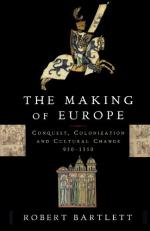|
This section contains 491 words (approx. 2 pages at 300 words per page) |

|
Karl Marx and Friedrich Engels wrote The Communist Manifesto in 1848. The following selection describes the struggle between classes.
The history of all hitherto existing society is the history of class struggles. Freeman and slave, patrician and plebeian, lord and serf, guildmaster and journeyman, in a word, oppressor and oppressed, stood in constant opposition to one another, carried on an uninterrupted, now hidden, now open fight, a fight that each time ended, either in a revolutionary reconstitution of society at large, or in the common ruin of the contending classes. . . .
The modern bourgeois society that has sprouted from the ruins of feudal society, has not done away with class antagonisms. It has but established new classes, new conditions of oppression, new forms of struggle in place of the old ones.
Our epoch, the epoch of the bourgeoisie, possesses...
|
This section contains 491 words (approx. 2 pages at 300 words per page) |

|




